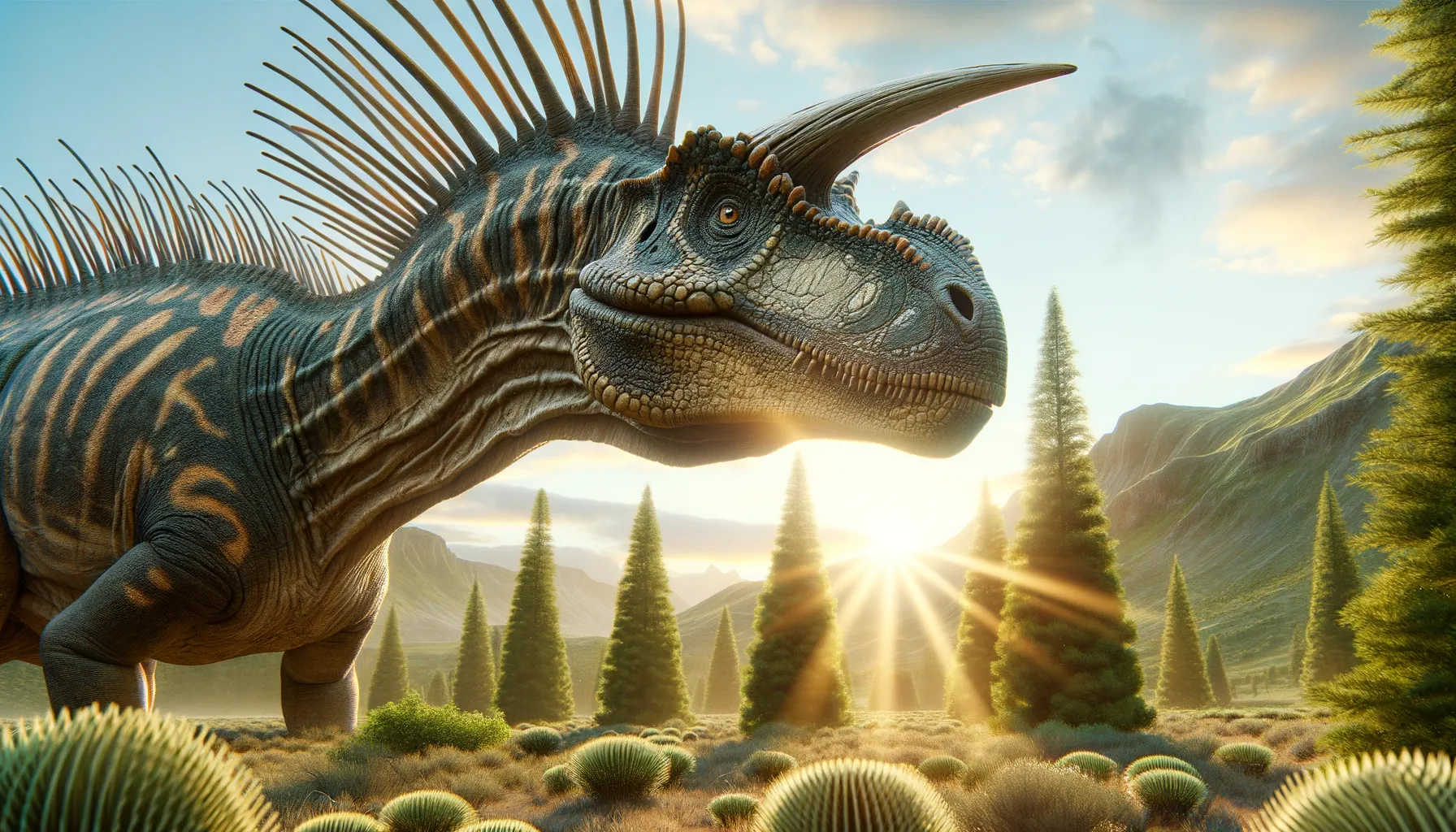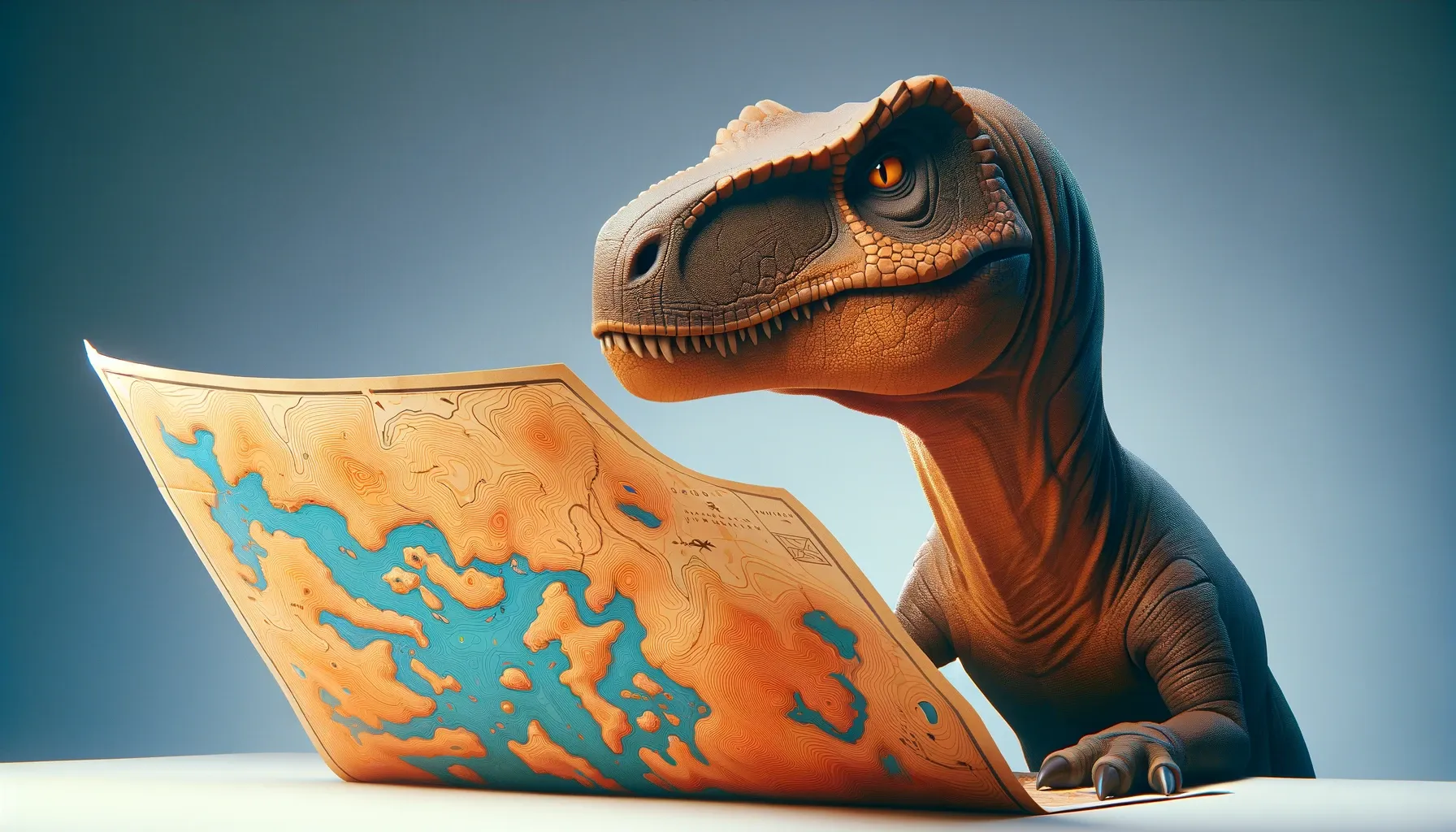
Amargasaurus
Unique spines for a unique dinosaur.
Period
Cretaceous
Length
Reached up to 33 feet in length.
Height
Approximately 9 feet tall at the shoulder.
Weight
Estimated around 2.5 to 3 tons.
Amargasaurus was a distinctive dinosaur known for the two rows of long, parallel spines extending along its neck and back. These spines might have supported skin sails or humps, potentially for display, thermoregulation, or defense. This herbivorous sauropod roamed prehistoric South America during the Early Cretaceous period. Despite its moderate size compared to other giants, its unusual appearance makes it a fascinating subject for paleontologists.
Diet
Amargasaurus was herbivorous, feeding primarily on plants. It consumed leaves and branches, possibly using its neck to reach vegetation at various heights. Its diet likely consisted of ferns, cycads, and conifers prevalent in its environment.
Hunting
As a herbivore, Amargasaurus did not engage in hunting. It likely foraged in groups for safety and access to food. Its long neck helped in reaching leaves from tall shrubs and trees.
Environmental challenges
Amargasaurus faced environmental challenges such as changes in climate, which affected vegetation patterns. Predators posed a constant threat, especially to the young and vulnerable. Navigating varied terrains also required adaptation, as food sources might be scarce in certain areas. Water availability could fluctuate, impacting survival during dry spells.
Speed
Relatively slow-moving due to its size.
Lifespan
Likely lived for several decades.
First discovery
Discovered in Argentina in 1984.
Fun Facts
- Amargasaurus lived during the Early Cretaceous period around 130 million years ago.
- It was a relatively small dinosaur, measuring about 33 feet (10 meters) in length.
- Amargasaurus is known for its distinctive double row of tall spiky spines running along its neck and back.
- These spines may have been used for display to attract mates or to ward off predators.
- It was a herbivore, likely feeding on low-lying plants and vegetation.
- Amargasaurus fossils have been found in what is now Argentina.
- The name Amargasaurus means 'La Amarga lizard', named after the La Amarga Formation where it was discovered.
Growth and Development
Amargasaurus grew relatively slowly, reaching full size over several years. As juveniles, they would stay close to adults for protection. Growth spurts might coincide with periods of abundant food supply. These dinosaurs developed their characteristic spines early, which grew larger as they matured.
Habitat
Amargasaurus inhabited lush, forested areas with ample vegetation. It thrived in environments where water sources, such as rivers or lakes, were accessible. These regions provided necessary foliage for sustenance. The habitat also supported a diversity of life, contributing to robust ecosystems.
Interaction with other species
Amargasaurus lived alongside various herbivorous and carnivorous dinosaurs. It likely traveled in herds for added protection against predators. Coexistence with other herbivores led to competition for similar food resources. Mutual alertness among different species might have aided in detecting threats.
Natural lifespan
Amargasaurus probably lived up to 30 to 40 years.
Reproduction
Amargasaurus likely reproduced by laying eggs, as did many dinosaurs. Nesting sites would have been chosen for safety and proximity to food. Hatchlings were vulnerable, needing protection from predators. Parenting behaviors, if present, might have included guarding nests or young.
Social behaviour
Amargasaurus might have exhibited herd behavior, providing protection against predators. Such social grouping facilitated communication about threats and food sources. Group living also aided in taking care of young and sick individuals. Interaction within herds could have included vocalizations or display movements.
Fossil locations
Amargasaurus fossils have been primarily found in Argentina. The discovery adds insight into the diversity of sauropods in South America. These findings have helped reconstruct its appearance and habits. Continued excavation may reveal more about its distribution and lifestyle.
